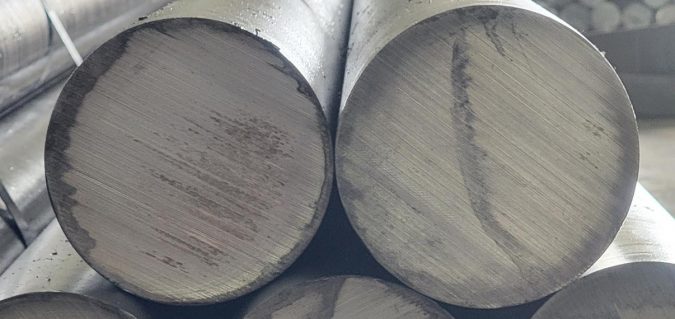
Steel is one of the most widely manufactured and most commonly used materials in human history. Despite how common it is, the average person knows little about the finer details and properties of steel. So, as industry experts, we’ve answered the internet’s most commonly asked questions about steel.
Does Steel Conduct Electricity?
Yes, steel is conductive to electricity. However, there are other more widely used metallic materials that are better conductors of electricity. Electric wires are typically made out of copper or aluminum due to their cost effectiveness and conducting capabilities. To clarify with an example, copper has a conductivity of 100%, while steel has a conductivity rating of 3-15%.
Is Steel an Element?
No, steel is not a pure element. Steel is made up of a variety of elements. Common elements that make up steel include iron, carbon, manganese, chromium, nickel, molybdenum, phosphorus, and many others. These combinations of elements, along with which way the steel is manufactured, make up a wide range of steel types.
Is Steel an Alloy?
Yes, steel is an alloy. An alloy is a combination of two or more metallic elements, or of a metal and a nonmetal, which give it greater strength, durability, and resistance to corrosion. There are thousands of different types of steel alloys. The chosen manufacturing process and which combinations of elements determine the type of steel alloy and which properties it has.
Is Steel a Metal?
No, steel is technically not a metal because it is not a pure element. Steel is composed of multiple types of metals, which makes it an alloy. Because they are not purely from one element, alloys are not metals. Examples of metals are found on the periodic table and include iron, nickel, copper, and manganese.
Is Steel a Compound or a Mixture?
Steel is a mixture. More specifically, steel is a liquid mixture when melted and a solid mixture at room temperature. Conversely, a compound is a substance that is chemically bonded together. An example of this would be water – two hydrogen plus one oxygen atom. The iron, carbon, manganese, sulphur, chromium, or any other element that make up steel do not chemically bond together to form a new compound.
Is Steel Homogenous or Heterogeneous?
Because steel is an alloy, steel is homogenous. It is a mixture of many different metallic elements, which are all evenly distributed throughout the steel product. If steel was heterogeneous, the elements that make up steel would not be evenly distributed, which would cause the properties of the steel to vary from product to product.
What are the Types of Steel?
There are over 3,500 different grades of steel with more being created every year. However most steel types can be categorized as one of the following:
- Carbon Steel – contains significant amounts of carbon in the chemical makeup
- Alloy Steel – contains iron and small amounts of additional elements like chromium, nickel, or vanadium
- Stainless Steel – contains large amounts of chromium, nickel, or molybdenum
- Tool Steel – contains especially durable elements like tungsten
For more detailed explanation of steel types, read our article on the different types of steel.
Is Steel Magnetic?
Yes, steel can be magnetic. However, this depends on the type of steel. Steel is a ferromagnetic material. Ferromagnetic materials become influenced by magnetic fields, but do not have their own magnetic field like a permanent magnet. Steel can be manufactured to be a permanent magnet, but most steel is not created to be magnetic. Steel is ferromagnetic because it is mostly made up of iron, which has an outer electron shell that is half full. Unlike other elements, the electrons in iron’s outer shell can easily be influenced by a magnetic field to point in a single direction.
Can Steel be Recycled?
Yes, steel can be recycled. In fact, steel’s manufacturing process is more environmentally friendly than those of similar materials. Additionally, the properties of steel remain unchanged regardless of the number of times that steel is recycled. This means that steel can be reused and recycled an unlimited number of times, making it a more sustainable choice. Also, because steel can be magnetized, it can be recovered fairly easily from landfills and during waste management processes.
Can Steel Rust?
Yes, steel can rust. When iron (which is the primary ingredient of steel) is exposed to oxygen and water, it will go through a chemical reaction called oxidation, which will form iron oxide. We commonly identify iron oxide as rust. Rust can form on steel both in the air or underwater. The chemical reaction is different underwater and creates iron hydroxide, and takes a longer amount of time. However, professionals commonly utilize various protective coatings to prevent steel from rusting.
For a more detailed answer, visit our article on why steel rusts.
Can Steel Burn?
Under the right circumstances, yes, steel can burn. Steel is a great conductor of heat and electricity, so it is difficult to burn a regular- sized piece of steel without reaching extreme temperatures. The heat is quickly dispersed among the rest of the steel, so it can be very difficult to reach a high enough temperature to actually burn it. However, you can burn something with a small surface area, like steel wool, quite easily. Its volume is small enough that the steel can heat up to a temperature where burning occurs.
Can Steel be Anodized?
Yes, steel can be anodized in some select scenarios. Anodizing is a process that forms an aluminum oxide layer over a base material. This is most commonly done for aluminum. Stainless steel can be anodized to help protect the steel from regular wear and to improve its resistance to corrosion. However, carbon steel should not be anodized, as it will corrode during the anodizing process.
Can Steel be Soldered?
Yes, steel can be soldered, however, the solder joints may become brittle in sulfur-rich environments. Carbon steel and low alloy steel have better solderability than high alloy steel and stainless steels. Typically, it is ideal to clean the steel surface with an aggressive flux before soldering.
Does Steel Melt?
Yes, steel does melt. In most steel manufacturing production processes, steel is melted before being formed into its desired shapes. The melting point of steel varies based on the type of steel alloy. Iron and stainless steel melt at around 2750 degrees Fahrenheit while carbon steel melts between 2,600 – 2,800 degrees Fahrenheit.
Does Steel Have Iron in it?
Yes, the primary element in steel is iron. For example, 1018 steel – a common steel grade – has an iron composition of 98.81-99.26%. While other types of steel are known for having various levels of other elements like carbon, and manganese, the vast majority of carbon steels have iron contents above 90%. Also, most stainless steels have iron contents of 70-90%.
Connect with Capital Steel for Your Steel Needs
Capital Steel has been proudly manufacturing, supplying, and distributing steel bar and wire products since 2001. Our team of experts is always ready to help fulfill your operations’ steel needs





